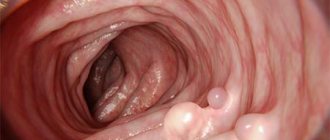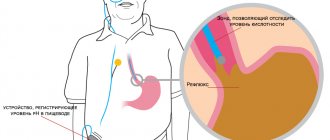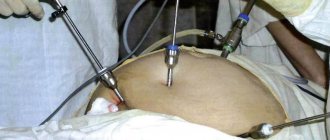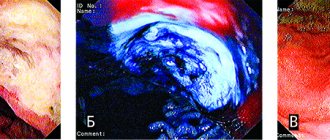Not all people know that they need to pay attention to their bowel movements, because if you notice black spots in an adult’s stool in time, you can draw a conclusion about your health. It is equally important to monitor the consistency and color; some features will indicate deviations in the functioning of the body. There are several reasons for the appearance of blackheads; a detailed consideration of them will help you avoid problems without turning to specialists. It is important to protect yourself, and without information about the rules of treatment and diagnosis, this is extremely difficult to do.
Natural causes of blackheads in stool
Dark spots in the stool may be pieces of food that cannot be digested. Also, black particles appear as a result of taking certain medications.
Food influence
Black grains in the stool are very noticeable in infants, since the stool itself is yellow and similar changes are very frightening for parents. If small specks of black or dark brown color begin to appear in the baby’s poop, do not immediately sound the alarm.
It is necessary to remember whether the baby has consumed the following products:
- Banana is not completely digested in the child’s intestines and comes out along with the feces as black strings.
- Persimmon - comes out in feces as small black grains of sand, as it is poorly digested by the child’s body.
- Small grains from kiwi may also not be digested and leave the body in its original form.
Feces with black dots in adults and children can also be caused by eating raspberries, currants, and grapes. Black grains like poppy seeds will be found in a person’s stool after eating food and will immediately disappear.
Eating pears and apples leads to the same effect as when bananas are included in the diet - feces with black streaks appear. If a person loves seeds, but does not clean them well and eats them with the husks, then black-speckled feces will be constantly observed every time he goes to the toilet “for the most part.”
Eating blood products (sausage, heart, liver, stomach) may cause the stool to become very dark in color, or may result in red-streaked stools or black pieces of digested meat.
Medications
Black streaks, small crumbs, or pebbles in dark-colored stool may result from taking certain medications. The instructions for use of medications always indicate such a side effect as black staining of stool. People taking these drugs should not be surprised that even if the stool is completely black, after the end of the course of treatment everything will return to normal. Drugs that change the color of stool include:
- Activated carbon.
- Bismuth containing preparations.
- Paracetamol.
- Ibuprofen.
Certain antibacterial drugs. If, after stopping the medications, black spots in the stool continue to bother a person, then you should consult a specialist to find out why the problem has not disappeared.
How does dysbacteriosis affect?
Dysbacteriosis is a phenomenon that can be observed in both adult patients and children. This condition refers to an imbalance between beneficial and opportunistic bacteria in the body. Dysbiosis often occurs in children who are transferred to artificial feeding, but in adults, an incorrectly selected diet can lead to the same problem. The disease can be caused by taking antimicrobial drugs, exposure to hormonal and radiotherapy, as well as radiation and chemistry.
Dysbacteriosis often becomes a side effect of infectious lesions of acute or chronic course; it develops against the background of helminthic infestation and with deterioration of the immune system. White streaks are found in the stool; adults and children may experience:
- diarrhea;
- change in color of stool;
- dyspeptic disorders - loss of appetite, feeling of nausea, vomiting attacks;
- there is a decrease in body weight;
- allergic reactions, cramping abdominal pain are possible;
- due to a lack of vitamins, the skin dries out, turns pale, stomatitis may develop, and problems with hair and nail plates appear.
Another sign indicating the presence of dysbiosis is the appearance of mucus in the stool.
Sign of pathology
If dark spots are associated with some diseases, most likely the patient will also experience other symptoms - diarrhea, heartburn, nausea, etc. But, even if there are no other obvious symptoms, it is still better to consult with your doctor.
Bleeding in the gastrointestinal tract
Dark spots in feces also appear as a result of bleeding in the internal organs. The iron contained in the hemoglobin of red blood cells is oxidized by microorganisms with the participation of enzymes and turns black. This is how droplets of oxidized blood appear in the stool in the form of black inclusions. Blood loss is accompanied by iron deficiency and anemia. As a result, the patient develops other symptoms:
- atrophy of the mucous membrane of the digestive canal;
- fainting;
- fatigue and weakness;
- deterioration in general health.
Internal bleeding can be caused by serious pathologies:
- diverticulitis (protrusions in the large intestine);
- Crohn's disease (inflammatory process in the mucosa and submucosa of the digestive canal);
- hemorrhoids; peptic ulcer; gastritis.
These diseases are dangerous in themselves. Their complications can also be severe, even fatal. That is why poor health and black spots in the stool of an adult are a reason to contact a specialist.
Infections
The culprit for the appearance of suspicious black particles in the stool may be an infection in the intestines. At the same time, the feces themselves become green. The smell becomes fetid and pungent.
An infected person is often bothered by pain attacks in the lower abdomen, as well as nausea and vomiting. Some time after the start of the infectious process, the patient’s body temperature rises, which turns into a state of fever and chills.
Cirrhosis or hepatitis
The root cause of the appearance of an alarming sign may be a disease of one of the internal organs: pancreas, liver. For example, such diseases include hepatitis and cirrhosis.
First, the feces of a person with cirrhosis take on an unnaturally light shade. As the disease progresses, black specks appear in the stool—oxidized blood particles. In its advanced form, feces become charcoal in color. In addition, the patient is bothered by frequent vomiting, and the vomit is dark brown in color. These are extremely alarming signals, meaning that urgent medical treatment is needed.
The feces of a person suffering from pancreatic diseases have a grayish tint with dark spots. Feces have an unnatural consistency and emit too much stench.
Worms
When a person has worms in their body, black spots may appear in their stool. These dark inclusions are helminth larvae or small parts of their bodies.
A person can become infected with helminthic infestation in several ways:
- Swimming in open water. If you take a sip of contaminated water, you can easily catch the parasite.
- When interacting with soil, sand or soil, which are an ideal environment for the development of worm eggs. Food of plant origin also comes into contact with the earth. Therefore, they must be washed well and doused with boiling water. Dogs or cats can also bring soil into the house after a walk.
- Through flying insects and cockroaches. These are malicious carriers of helminthic eggs.
- From an infected person to a healthy one.
It is not difficult to notice the symptoms of the presence of worms in an adult. The infected person's appetite increases significantly, but the weight does not increase, but rather decreases. The face becomes pale. I am worried about persistent fatigue and itching around the anus. It is at night that parasites leave the intestines and lay eggs (pinworms) in the anus area.
Due to reduced immunity, those infected with worms often suffer from infectious diseases. Pathologies of internal organs may begin, and chronic diseases may worsen. Often patients try to cope only with visible health problems, while the underlying cause remains unaddressed.
Due to the harmful substances that parasites secrete, the infected person feels unwell. A person periodically experiences dizziness, migraines, and joint pain. With helminthiasis, allergies are possible, the skin suffers (the skin flakes, itches, rashes and rashes appear). Cough, rhinitis may worsen, and asthma attacks may become more frequent. Sometimes hair falls out, nail plates peel, and heels crack.
There are more than a hundred parasites that can live in the human body. The main signs of helminthiasis depending on the type of parasite are presented in the table.
Table 1. Signs of helminth infection
| Signs | Name of disease, name of parasite | Source of infection | How long after infection do symptoms appear? |
| Abdominal pain, loss of appetite, cough, possible fever | Fascioliasis (affects the liver and biliary system) - Fasciola gigantica and Fasciola hepatica (fluke) | Water or fruits of plants | Two to four weeks |
| Fever, myalgia, swelling of the face, rash, blood eosinophilia. | Trichinosis - helminth Trichinella | Lard and meat that have not undergone sufficient heat treatment | 2 days |
| Weakness and malaise, possible chills and nausea with pain in the intestinal area, severe diarrhea. If the helminth crawls into the respiratory tract, an attack of suffocation may occur. | Ascariasis - roundworm worms | Plant products | 3 months |
| Headache, weakness, slight increase in body temperature, signs of allergies (itching, skin rash). The lymph nodes, as well as the spleen and liver, increase in size. | Hookworm (ground scabies) - causative agent - round worm | Walking without shoes on affected soil | About 2 days |
| Intoxication of the body, allergic reactions, bloating, itching, possible burning, constipation or diarrhea, asthmatic phenomena, fever. It can live up to twenty-five years in the human body. | Diphyllobothriasis (common in the countries of the northern hemisphere) - order Pseudophylidea (wide tapeworm) | Eating river fish | 1-2 weeks |
| Diarrhea, abdominal pain, poor appetite, appendicitis. | Trichocephalosis - whipworm parasite | Contaminated food that was prepared without proper sanitation | 1-2 weeks |
| Rapidly passing sharp pain near the navel. Itching around the anus at night. | Enterobiasis (the most common type) - pinworms | Plants | 2-3 days |
If there is the slightest suspicion of helminthiasis, you should definitely consult with a qualified specialist: a parasitologist, an infectious disease specialist. At the clinic, a referral to these doctors can be obtained from a general practitioner. The specialist will ask you to take tests and, based on the results, will prescribe a treatment plan and prescribe medications. Some drugs may work against one type of worm and be useless against another. Therefore, medication should be started only after the parasite has been identified.
Indigestion
One of the reasons for the appearance of dots in the stool can be safely called a problem with digestion; these pathologies will certainly affect the color of the stool. At the slightest manifestation of symptoms, you should consult your doctor; timely assistance from a specialist will protect you from serious problems. The correct diagnosis can be found out only after passing the appropriate tests; the diagnosis should be taken as seriously as possible. To place the feces, you need to prepare a clean container; it is better to buy a special container at the pharmacy; the correct approach to the process will affect the accuracy of the results.
Intestinal candidiasis
The intestines of every person contain a huge number of different microorganisms. Many of them belong to the category of opportunistic pathogens, representing a danger only in the presence of certain factors. Representatives of opportunistic microflora include fungi of the genus Candida, which are the causative agent of such an unpleasant disease as intestinal candidiasis.
The main symptoms include:
- Bloating, which occurs not only after eating food, but also at any other time;
- Heaviness in the epigastric area;
- Painful cramps in the intestines that occur after eating;
- Stool thinning, change in stool consistency;
- Slight increase in body temperature;
- Decreased appetite;
- Bloody and purulent elements in stool
To suppress the growth of Candida bacteria, special antifungal drugs are used. Most often, topical agents are prescribed, available in the form of rectal suppositories. Such drugs have a faster and more effective effect, because they penetrate directly into the affected area.
To successfully treat candidiasis, it is not enough just to destroy the causative agent of the disease; it is also necessary to stimulate the growth of the number of beneficial microorganisms. For this purpose, various preparations based on pre- and probiotics are used. The action of these remedies helps to increase the number of beneficial bacteria in the intestines, resulting in the restoration of the normal functionality of the organ.
Treatment of intestinal thrush
Intestinal candidiasis is considered a severe type of dysbiosis, when conditions favorable for the active growth of pathogenic and opportunistic flora are created in the large and small intestines. Combination regimens are used for treatment, which can be adjusted taking into account the patient’s age and general well-being.
Table. Treatment of intestinal candidiasis in adults.
| Group of drugs | What medications to take |
| Bifidobacteria and lactic acid bacteria to restore the balance of intestinal microflora and stimulate the growth of your own beneficial bacteria | "Bifiform" "Bifidumbacterin" "Acipol" "Yogulakt" "Narine" "Acilakt" in the form of vaginal suppositories for a mixed form of genital-fecal candidiasis (for women) |
| Preparations for internal use with antifungal action | "Fluconazole" "Miconazole" "Pimafucin" "Nystatin" "Polygynax" |
| Prebiotics containing lactulose (have a laxative effect, contraindicated for diarrhea) | "Lactulose" (syrup) "Duphalac" "Normaze" "Lactusan" |
| Local agents (applied to the anal area) | "Pimafucin" (cream) Sodium tetraborate solution in glycerin (concentration - from 5% to 20%) |
What to do if black spots appear in stool?
If you find dark specks in your stool, do the following:
- Remember and write down all the foods you consumed in the last three days. Include medications, vitamin complexes and nutritional supplements in the resulting list. Think about what of this could end up in the feces in the form of dark inclusions.
- Over the next few days, monitor the color of your stool. If the cause of dark spots is food, after 2-3 days the stool will return to its normal brown color. If the atypical color of the stool is associated with pathologies in the body, the black spots will not disappear. They may also disappear for a short time and then return for no apparent reason.
- Pay attention to how you feel. If there are no other symptoms and you have nothing to complain about, there is most likely nothing to worry about. But if you have other problems with the gastrointestinal tract (constipation, diarrhea, abdominal pain, etc.), it is necessary to undergo a medical examination.
- Such questions should be addressed to a gastroenterologist. This is the doctor who treats digestive disorders. The specialist will conduct an examination and prescribe some tests.
Lactase deficiency in adults
This is a fairly rare pathology, which is characterized by a lack of enzymes responsible for the breakdown of milk sugar molecules (hypolactasia). The main group of patients with this disease are children of the first year of life, as well as children of the younger age group (up to 3 years). In adults, the incidence of hypolactasia diagnosis is approximately 8.9%. With lactase deficiency, the human body cannot digest not only whole milk, but also any products that contain milk sugar (lactose): cheeses, cottage cheese, kefir, yogurt.
It is impossible to recognize the disease in an adult without laboratory diagnostics, but you can independently identify pathological symptoms, especially if they occur after consuming milk and milk-based products. Symptoms of hypolactasia include:
- stool liquefaction and diarrhea, provoked by an increase in osmotic pressure and the influx of water into the intestinal cavity;
- pain in the lower abdomen, which becomes spasmodic when intensified;
- bloating (mostly without flatulence syndrome - involuntary passage of gases);
- appearance of milk flakes in feces.
In some patients, hypolactasia manifests itself as chronic constipation. There may be no stool for three days or more, and the feces come out in separate dense lumps mixed with white particles.
In rare cases, vomiting may be a symptom of lactose intolerance. It has a white or milky color, a sharp sour milk smell and may contain undigested particles of curd consistency. This symptom always appears after eating.
Principles of pathology treatment
Treatment will be based on the cause of blackheads in human feces. Also an important point will be the age of the patient - for young children, many treatments are often not applicable and you will have to look for other ways to solve the problem. The main principles of treatment will be:
- Establishing a diagnosis with the exact cause of the disease.
- Selection of drugs for symptomatic treatment (analgesics, laxatives, fortifications).
- Selection of etiotropic agents to eliminate the cause of the appearance of black spots (antibacterial, antiviral, vasoconstrictor).
- The use of supportive and auxiliary therapy (probiotics, enzymes, immunostimulants).
- Prescribing a specific diet, if necessary, at least not for the first period of recovery after illness.
- Lack of fluid in the diet is one of the main causes of constipation. To get rid of it in 3 days, you need to drink a simple remedy every day
Black spots in the stool can be the first symptom of a serious pathology of the gastrointestinal tract. You should always immediately discard the most banal and safe reasons, and if they do not suit, then go for a diagnosis. There is no need to wait for new symptoms; the prognosis of any disease primarily depends on the speed of diagnosis, and the latest diagnostic methods make it possible to identify the cause of any illness at very early stages.
How to make a diagnosis?
It is always better to entrust the diagnosis to a specialist, especially if the person is sure that the problem does not lie in diet or medications.
The doctor’s action algorithm will be as follows:
- Collecting anamnesis and clarifying all disturbing symptoms.
- Conducting laboratory diagnostics (stool testing for coprogram and occult blood, if it is not visible in the stool).
- Conducting instrumental diagnostics (colonoscopy or x-ray) – carried out if intestinal bleeding is suspected in order to establish and remove the source of blood loss.
- Selection of treatment from a group of medications, as well as the prescription of surgical procedures if necessary (help as a means of diagnosis and treatment at the same time).
A quick diagnosis will help cure a person, even if the symptom was just black spots in the stool.
It is better to seek help at the initial stage of the development of the disease, rather than wait for rapid progress, bringing the person’s condition to critical condition.
Diet correction
Menu correction is carried out in order to normalize digestion and establish the cause of the symptom. First of all, foods that tend to color feces in a dark shade are excluded from the diet. Such products include beets, bananas (especially in large quantities), prunes, grapes with red berries.
Next, you should be careful. If within 7 days after correcting the diet, black spots disappear from the stool, then there is nothing to worry about. The cause of the symptom is natural.
If after some time the symptom recurs, most likely the food is not completely digested. Then you should contact a medical facility and, under the supervision of a specialist, improve your intestinal function through pharmaceutical medications.
You will have to exclude heavy, fried foods from the menu (you can fry without oil in a non-stick frying pan), foods with a high fat content (but not low-fat). It is necessary to limit foods that the gastrointestinal tract does not handle well. To improve digestion, it is recommended to eat little by little six times a day. This way, the food will have time to be completely digested and will not come out as strange dots in the stool.
Is this the norm?
For young children this is a normal physiological process. During the period of intestinal formation, a child’s stool varies. The appearance of blackheads is normal. Especially during the feeding period. Over time, the body gets used to certain foods and the digestive system completely digests them with age. The presence of black threads in the stool does not require visiting a doctor and treatment if the child feels well.
Otherwise, you need to call a doctor, since the cause may not be the black threads. First of all:
- no need to worry and panic;
- remember and analyze what the child ate the day before.
Young mothers love to worry, but they should take care of their own health. If black strings appear in a child’s stool, there is nothing to worry about. This is a common occurrence and does not require treatment. Over time, the digestive system will be fully formed and such elements will disappear. Usually, by the age of 3 years, feces are completely normal in children.
A few words about traditional medicine
Self-medication with folk remedies is not worth it. But even doctors often prescribe herbal decoctions and infusions to combat intestinal problems. If patients experience yellow stool with black dots, doctors often resort to traditional methods of treatment. I would like to say right away that you should not self-medicate, as this can be very dangerous for your health. However, on the advice of a doctor, you can prepare infusions from useful herbs such as chamomile, mint, sage or calendula. All of them have a good effect on the digestive system. They can be taken individually or mixed. The optimal dosage is one hundred milliliters of infusion, which should be taken half an hour before meals. It is best to drink the product two to three times a day.
What are these white-gray worms with a black head?
It seems that the white-gray worm with a black head is the same myth. In any case, there is no mention of such a head in any description of different types of helminths.
A search on the Internet also did not produce results: the clear request “white-gray worms with a black head” produced a large number of photos of completely ordinary parasites and larvae that actually had a dark head, but, as it turned out, they turned out to be larvae of flies and other insects
If you do see such a specimen, then most likely its black head is just a piece of feces or dark-colored undigested dietary fiber.
Sciarid larvae. They live in the soil. Safe for humans
Prevention measures
To prevent the reappearance of dark particles in the stool, the patient is prescribed diet number five. It involves eliminating heavy foods and fried foods. The diet should contain a lot of fiber, which is found in vegetables and fruits. It is also recommended to eat cereals, white fish, and low-fat poultry. Nutritionists advise switching to eating small portions 5-6 times a day. With this schedule, all incoming food will be well digested and there will be no more dark particles in the stool.
Possible diseases
Intestinal diseases constitute a fairly large group of diseases of the gastrointestinal tract and are almost always characterized by changes in the color, consistency and appearance of feces. Pathologies in which one of the clinical signs may be the appearance of white spots or a white film in the stool are listed below.
Enterobiasis
White spots in the stool may be the eggs of pinworms - nematodes that parasitize the intestinal lumen after entering the gastrointestinal tract. Enterobiasis is characterized by intense anal itching, burning, and redness of the skin around the anus. The stool may retain its usual consistency, but white lumps may be found on its surface, which are helminth eggs.
It is not always possible to detect signs of pathology visually, so adults are recommended to be examined for enterobiasis at least once a year.
Crohn's disease
A severe systemic disease manifested by inflammation of all parts of the digestive tract, including the esophageal tube and oral cavity. It may have various symptoms, including various pains in the epigastric and abdominal areas, vomiting, and lack of appetite (against this background, patients experience significant weight loss). Almost 65% of patients experience fecal incontinence, and the excrement itself looks like a poorly formed mush with various streaks and inclusions.
Treatment of the pathology is surgical, followed by supportive drug therapy. The risk of mortality during an exacerbation is about 35%. Patients with Crohn's disease receive lifelong disability after surgical treatment.
The appearance of any impurities in the stool is an alarming symptom, even if the person feels normal and does not have any complaints. Some intestinal pathologies may remain asymptomatic for a long time, so any changes in the appearance of stool should be a reason to consult a doctor.
A few final words
Thus, normally formed black feces, as a single manifestation, do not pose a danger. If the situation is aggravated by incipient diarrhea, when loose stools darken or turn black, and more serious accompanying symptoms appear, you must urgently contact a medical facility for help (it is better to immediately call an ambulance). Such symptoms include weakness, apathy, fainting, dizziness, confusion, and a sharp decrease in blood pressure.
The more pronounced these and other clinical manifestations are, the greater the volume of blood loss that has occurred and the longer the diseased state of the body. Independent steps can only be replenishing the water-salt balance (drinking plenty of fluids) and a specific diet, which, as a rule, are the first actions for diarrhea of any color in principle.










